Coalescence Processes of Droplets and Liquid Marbles
Abstract
:1. Introduction
2. Fundamental Physics of the Coalescence Process of Droplets and Liquid Marbles
2.1. Mechanisms of Droplet Coalescence
2.1.1. Coalescence of Two Droplets Freely Suspended in a Fluid
2.1.2. Coalescence of Two Sessile Droplets on a Solid Substrate
2.1.3. Coalescence of a Falling Droplet and a Sessile Droplet on a Solid Substrate
2.2. Mechanisms of Liquid Marble Coalescence
2.3. Experimental Parameters to Be Considered in Coalescence Processes of Droplets and Liquid Marbles
3. Engineering Coalescence of Droplets and of Liquid Marbles
3.1. Electric Energy
3.2. Thermal Energy
3.3. Pneumatic Energy
3.4. Magnetic Energy
3.5. Optical Energy
3.6. Other Energies
4. Practical Applications of Droplet Coalescence and Liquid Marble Coalescence
5. Conclusions and Future Perspectives
Acknowledgments
Author Contributions
Conflicts of Interest
References
- Choi, K.; Ng, A.H.; Fobel, R.; Wheeler, A.R. Digital microfluidics. Annu. Rev. Anal. Chem. 2012, 5, 413–440. [Google Scholar] [CrossRef] [PubMed]
- Mashaghi, S.; Abbaspourrad, A.; Weitz, D.A.; van Oijen, A.M. Droplet microfluidics: A tool for biology, chemistry and nanotechnology. TrAC Trends Anal. Chem. 2016, 82, 118–125. [Google Scholar] [CrossRef]
- Nguyen, N.-T.; Hejazian, M.; Ooi, C.; Kashaninejad, N. Recent advances and future perspectives on microfluidic liquid handling. Micromachines 2017, 8, 186. [Google Scholar] [CrossRef]
- Song, H.; Chen, D.L.; Ismagilov, R.F. Reactions in droplets in microfluidic channels. Angew. Chem. Int. Ed. Engl. 2006, 45, 7336–7356. [Google Scholar] [CrossRef] [PubMed]
- Teh, S.Y.; Lin, R.; Hung, L.H.; Lee, A.P. Droplet microfluidics. Lab Chip 2008, 8, 198–220. [Google Scholar] [CrossRef] [PubMed]
- Weigl, B.H.; Bardell, R.L.; Cabrera, C.R. Lab-on-a-chip for drug development. Adv. Drug Deliv. Rev. 2003, 55, 349–377. [Google Scholar] [CrossRef]
- Tao, X.; Chakrabarty, K. Parallel scan-like test and multiple-defect diagnosis for digital microfluidic biochips. IEEE Trans. Biomed. Circuits Syst. 2007, 1, 148–158. [Google Scholar] [CrossRef]
- Nobari, M.R.; Jan, Y.J.; Tryggvason, G. Head-on collision of drops—A numerical investigation. Phys. Fluids 1996, 8, 29–42. [Google Scholar] [CrossRef]
- Kovetz, A.; Olund, B. The effect of coalescence and condensation on rain formation in a cloud of finite vertical extent. J. Atmos. Sci. 1969, 26, 1060–1065. [Google Scholar] [CrossRef]
- Bellehumeur, C.; Bisaria, M.; Vlachopoulos, J. An experimental study and model assessment of polymer sintering. Polym. Eng. Sci. 1996, 36, 2198–2207. [Google Scholar] [CrossRef]
- Dreher, T.; Glass, J.; O’Connor, A.; Stevens, G. Effect of rheology on coalescence rates and emulsion stability. AIChE 1999, 45, 1182–1190. [Google Scholar] [CrossRef]
- Bradley, S.; Stow, C. Collisions between liquid drops. Philos. Trans. R. Soc. Lond. A Math. Phys. Eng. Sci. 1978, 287, 635–675. [Google Scholar] [CrossRef]
- Kapur, N.; Gaskell, P.H. Morphology and dynamics of droplet coalescence on a surface. Phys. Rev. E Stat. Nonlinear Soft Matter Phys. 2007, 75, 056315. [Google Scholar] [CrossRef] [PubMed]
- Yao, W.; Maris, H.J.; Pennington, P.; Seidel, G.M. Coalescence of viscous liquid drops. Phys. Rev. E Stat. Nonlinear Soft Matter Phys. 2005, 71, 016309. [Google Scholar] [CrossRef] [PubMed]
- Orme, M. Experiments on droplet collisions, bounce, coalescence and disruption. Prog. Energy Combust. Sci. 1997, 23, 65–79. [Google Scholar] [CrossRef]
- Wu, M.; Cubaud, T.; Ho, C.-M. Scaling law in liquid drop coalescence driven by surface tension. Phys. Fluids 2004, 16, L51–L54. [Google Scholar] [CrossRef]
- Geng, H.; Feng, J.; Stabryla, L.M.; Cho, S.K. Dielectrowetting manipulation for digital microfluidics: Creating, transporting, splitting, and merging of droplets. Lab Chip 2017, 17, 1060–1068. [Google Scholar] [CrossRef] [PubMed]
- Nguyen, N.-T.; Wu, Z. Micromixers—A review. J. Micromech. Microeng. 2005, 15, R1–R16. [Google Scholar] [CrossRef]
- Paik, P.; Pamula, V.K.; Fair, R.B. Rapid droplet mixers for digital microfluidic systems. Lab Chip 2003, 3, 253–259. [Google Scholar] [CrossRef] [PubMed]
- Sung Kwon, C.; Hyejin, M.; Chang-Jin, K. Creating, transporting, cutting, and merging liquid droplets by electrowetting-based actuation for digital microfluidic circuits. J. Microelectromech. Syst. 2003, 12, 70–80. [Google Scholar] [CrossRef]
- Bithi, S.S.; Wang, W.S.; Sun, M.; Blawzdziewicz, J.; Vanapalli, S.A. Coalescing drops in microfluidic parking networks: A multifunctional platform for drop-based microfluidics. Biomicrofluidics 2014, 8, 034118. [Google Scholar] [CrossRef] [PubMed]
- Guo, M.T.; Rotem, A.; Heyman, J.A.; Weitz, D.A. Droplet microfluidics for high-throughput biological assays. Lab Chip 2012, 12, 2146–2155. [Google Scholar] [CrossRef] [PubMed]
- Thomson, J.; Newall, H. On the formation of vortex rings by drops falling into liquids, and some allied phenomena. Proc. R. Soc. Lond. 1885, 39, 417–436. [Google Scholar] [CrossRef]
- Worthington, A. On the forms assumed by drops of liquids falling vertically on a horizontal plate. Proc. R. Soc. Lond. 1876, 25, 261–272. [Google Scholar] [CrossRef]
- Worthington, A.M. On impact with a liquid surface. Proc. R. Soc. Lond. 1882, 34, 217–230. [Google Scholar] [CrossRef]
- Josserand, C.; Thoroddsen, S.T. Drop impact on a solid surface. Annu. Rev. Fluid Mech. 2016, 48, 365–391. [Google Scholar] [CrossRef]
- Antonini, C.; Amirfazli, A.; Marengo, M. Drop impact and wettability: From hydrophilic to superhydrophobic surfaces. Phys. Fluids 2012, 24, 102104. [Google Scholar] [CrossRef]
- Sprittles, J.E.; Shikhmurzaev, Y.D. The dynamics of liquid drops and their interaction with solids of varying wettabilities. Phys. Fluids 2012, 24, 082001. [Google Scholar] [CrossRef]
- Rein, M. The transitional regime between coalescing and splashing drops. J. Fluid Mech. 1996, 306, 145–165. [Google Scholar] [CrossRef]
- Thoroddsen, S.T.; Etoh, T.G.; Takehara, K. Air entrapment under an impacting drop. J. Fluid Mech. 2003, 478, 125–134. [Google Scholar] [CrossRef]
- Thoroddsen, S.T.; Takehara, K. The coalescence cascade of a drop. Phys. Fluids 2000, 12, 1265–1267. [Google Scholar] [CrossRef]
- Mohamed-Kassim, Z.; Longmire, E.K. Drop coalescence through a liquid/liquid interface. Phys. Fluids 2004, 16, 2170–2181. [Google Scholar] [CrossRef]
- Mohamed-Kassim, Z.; Longmire, E.K. Drop impact on a liquid–liquid interface. Phys. Fluids 2003, 15, 3263–3273. [Google Scholar] [CrossRef]
- Hsu, A.S.; Roy, A.; Leal, L.G. Drop-size effects on coalescence of two equal-sized drops in a head-on collision. J. Rheol. 2008, 52, 1291–1310. [Google Scholar] [CrossRef]
- Acevedo-Malavé, A.; García-Sucre, M. Coalescence collision of liquid drops I: Off-center collisions of equal-size drops. AIP Adv. 2011, 1, 032117. [Google Scholar] [CrossRef]
- Acevedo-Malavé, A.; García-Sucre, M. Coalescence collision of liquid drops II: Off-center collisions of unequal-size drops. AIP Adv. 2011, 1, 032118. [Google Scholar] [CrossRef]
- Tang, C.; Zhang, P.; Law, C.K. Bouncing, coalescence, and separation in head-on collision of unequal-size droplets. Phys. Fluids 2012, 24, 022101. [Google Scholar] [CrossRef]
- Li, R.; Ashgriz, N.; Chandra, S.; Andrews, J.R.; Drappel, S. Coalescence of two droplets impacting a solid surface. Exp. Fluids 2010, 48, 1025–1035. [Google Scholar] [CrossRef]
- Menchaca-Rocha, A.; Martinez-Davalos, A.; Nunez, R.; Popinet, S.; Zaleski, S. Coalescence of liquid drops by surface tension. Phys. Rev. E Stat. Nonlinear Soft Matter Phys. 2001, 63, 046309. [Google Scholar] [CrossRef] [PubMed]
- Eggers, J. Coalescence of spheres by surface diffusion. Phys. Rev. Lett. 1998, 80, 2634. [Google Scholar] [CrossRef]
- Bremond, N.; Thiam, A.R.; Bibette, J. Decompressing emulsion droplets favors coalescence. Phys. Rev. Lett. 2008, 100, 024501. [Google Scholar] [CrossRef] [PubMed]
- Scarbolo, L.; Bianco, F.; Soldati, A. Coalescence and breakup of large droplets in turbulent channel flow. Phys. Fluids 2015, 27, 073302. [Google Scholar] [CrossRef]
- Zagnoni, M.; Le Lain, G.; Cooper, J.M. Electrocoalescence mechanisms of microdroplets using localized electric fields in microfluidic channels. Langmuir 2010, 26, 14443–14449. [Google Scholar] [CrossRef] [PubMed]
- Yarin, A. Drop impact dynamics: Splashing, spreading, receding, bouncing. Annu. Rev. Fluid Mech. 2006, 38, 159–192. [Google Scholar] [CrossRef]
- Rein, M. Phenomena of liquid drop impact on solid and liquid surfaces. Fluid Dyn. Res. 1993, 12, 61–93. [Google Scholar] [CrossRef]
- Bonn, D.; Eggers, J.; Indekeu, J.; Meunier, J.; Rolley, E. Wetting and spreading. Rev. Mod. Phys. 2009, 81, 739–805. [Google Scholar] [CrossRef]
- Xu, B.; Nguyen, N.-T.; Neng Wong, T. Droplet coalescence in microfluidic systems. Micro Nanosyst. 2011, 3, 131–136. [Google Scholar] [CrossRef]
- Eow, J.S.; Ghadiri, M. Electrostatic enhancement of coalescence of water droplets in oil: A review of the technology. Chem. Eng. J. 2002, 85, 357–368. [Google Scholar] [CrossRef]
- Leal, L.G. Flow induced coalescence of drops in a viscous fluid. Phys. Fluids 2004, 16, 1833–1851. [Google Scholar] [CrossRef]
- Aussillous, P.; Quere, D. Liquid marbles. Nature 2001, 411, 924–927. [Google Scholar] [CrossRef] [PubMed]
- Aussillous, P.; Quere, D. Properties of liquid marbles. Proc. R. Soc. A Math. Phys. Eng. Sci. 2006, 462, 973–999. [Google Scholar] [CrossRef]
- Aussillous, P.; Quere, D. Shapes of rolling liquid drops. J. Fluid Mech. 2004, 512. [Google Scholar] [CrossRef]
- Bormashenko, E. Liquid marbles: Properties and applications. Curr. Opin. Colloid Interface Sci. 2011, 16, 266–271. [Google Scholar] [CrossRef]
- McHale, G.; Newton, M.I. Liquid marbles: Principles and applications. Soft Matter 2011, 7, 5473. [Google Scholar] [CrossRef]
- Ooi, C.H.; Nguyen, N.-T. Manipulation of liquid marbles. Microfluid. Nanofluid. 2015, 19, 483–495. [Google Scholar] [CrossRef]
- Bormashenko, E.; Pogreb, R.; Musin, A. Stable water and glycerol marbles immersed in organic liquids: From liquid marbles to pickering-like emulsions. J. Colloid Interface Sci. 2012, 366, 196–199. [Google Scholar] [CrossRef] [PubMed]
- Ooi, C.H.; Plackowski, C.; Nguyen, A.V.; Vadivelu, R.K.; St John, J.A.; Dao, D.V.; Nguyen, N.T. Floating mechanism of a small liquid marble. Sci. Rep. 2016, 6, 21777. [Google Scholar] [CrossRef] [PubMed]
- Ooi, C.H.; van Nguyen, A.; Evans, G.M.; Gendelman, O.; Bormashenko, E.; Nguyen, N.-T. A floating self-propelling liquid marble containing aqueous ethanol solutions. RSC Adv. 2015, 5, 101006–101012. [Google Scholar] [CrossRef]
- Kavokine, N.; Anyfantakis, M.; Morel, M.; Rudiuk, S.; Bickel, T.; Baigl, D. Light-driven transport of a liquid marble with and against surface flows. Angew. Chem. Int. Ed. Engl. 2016, 55, 11183–11187. [Google Scholar] [CrossRef] [PubMed]
- Xue, Y.; Wang, H.; Zhao, Y.; Dai, L.; Feng, L.; Wang, X.; Lin, T. Magnetic liquid marbles: A “precise” miniature reactor. Adv. Mater. 2010, 22, 4814–4818. [Google Scholar] [CrossRef] [PubMed]
- Bhosale, P.S.; Panchagnula, M.V. Sweating liquid micro-marbles: Dropwise condensation on hydrophobic nanoparticulate materials. Langmuir 2012, 28, 14860–14866. [Google Scholar] [CrossRef] [PubMed]
- Ashgriz, N.; Poo, J. Coalescence and separation in binary collisions of liquid drops. J. Fluid Mech. 1990, 221, 183–204. [Google Scholar] [CrossRef]
- Jiang, Y.; Umemura, A.; Law, C. An experimental investigation on the collision behaviour of hydrocarbon droplets. J. Fluid Mech. 1992, 234, 171–190. [Google Scholar] [CrossRef]
- Qian, J.; Law, C. Regimes of coalescence and separation in droplet collision. J. Fluid Mech. 1997, 331, 59–80. [Google Scholar] [CrossRef]
- Mashayek, F.; Ashgriz, N.; Minkowycz, W.; Shotorban, B. Coalescence collision of liquid drops. Int. J. Heat Mass Transf. 2003, 46, 77–89. [Google Scholar] [CrossRef]
- Willis, K.; Orme, M. Experiments on the dynamics of droplet collisions in a vacuum. Exp. Fluids 2000, 29, 347–358. [Google Scholar] [CrossRef]
- Willis, K.; Orme, M. Binary droplet collisions in a vacuum environment: An experimental investigation of the role of viscosity. Exp. Fluids 2003, 34, 28–41. [Google Scholar] [CrossRef]
- Eggers, J.; Lister, J.R.; Stone, H.A. Coalescence of liquid drops. J. Fluid Mech. 1999, 401, 293–310. [Google Scholar] [CrossRef]
- Duchemin, L.; Eggers, J.; Josserand, C. Inviscid coalescence of drops. J. Fluid Mech. 2003, 487, 167–178. [Google Scholar] [CrossRef]
- Oguz, H.N.; Prosperetti, A. Surface-tension effects in the contact of liquid surfaces. J. Fluid Mech. 1989, 203, 149–171. [Google Scholar] [CrossRef]
- Thoroddsen, S.T.; Takehara, K.; Etoh, T.G. The coalescence speed of a pendent and a sessile drop. J. Fluid Mech. 2005, 527, 85–114. [Google Scholar] [CrossRef]
- Aarts, D.G.; Lekkerkerker, H.N.; Guo, H.; Wegdam, G.H.; Bonn, D. Hydrodynamics of droplet coalescence. Phys. Rev. Lett. 2005, 95, 164503. [Google Scholar] [CrossRef] [PubMed]
- Case, S.C.; Nagel, S.R. Coalescence in low-viscosity liquids. Phys. Rev. Lett. 2008, 100, 084503. [Google Scholar] [CrossRef] [PubMed]
- Case, S.C. Coalescence of low-viscosity fluids in air. Phys. Rev. E Stat. Nonlinear Soft Matter Phys. 2009, 79, 026307. [Google Scholar] [CrossRef] [PubMed]
- Paulsen, J.D.; Burton, J.C.; Nagel, S.R. Viscous to inertial crossover in liquid drop coalescence. Phys. Rev. Lett. 2011, 106, 114501. [Google Scholar] [CrossRef] [PubMed]
- Sprittles, J.E.; Shikhmurzaev, Y.D. Coalescence of liquid drops: Different models versus experiment. Phys. Fluids 2012, 24, 122105. [Google Scholar] [CrossRef]
- Paulsen, J.D.; Burton, J.C.; Nagel, S.R.; Appathurai, S.; Harris, M.T.; Basaran, O.A. The inexorable resistance of inertia determines the initial regime of drop coalescence. Proc. Natl. Acad. Sci. USA 2012, 109, 6857–6861. [Google Scholar] [CrossRef] [PubMed]
- Kim, J.; Longmire, E.K. Investigation of binary drop rebound and coalescence in liquids using dual-field piv technique. Exp. Fluids 2009, 47, 263–278. [Google Scholar] [CrossRef]
- Yang, H.; Park, C.C.; Hu, Y.T.; Leal, L.G. The coalescence of two equal-sized drops in a two-dimensional linear flow. Phys. Fluids 2001, 13, 1087–1106. [Google Scholar] [CrossRef]
- Yoon, Y.; Baldessari, F.; Ceniceros, H.D.; Leal, L.G. Coalescence of two equal-sized deformable drops in an axisymmetric flow. Phys. Fluids 2007, 19, 102102. [Google Scholar] [CrossRef]
- Ristenpart, W.D.; McCalla, P.M.; Roy, R.V.; Stone, H.A. Coalescence of spreading droplets on a wettable substrate. Phys. Rev. Lett. 2006, 97, 064501. [Google Scholar] [CrossRef] [PubMed]
- Lee, M.W.; Kang, D.K.; Yoon, S.S.; Yarin, A.L. Coalescence of two drops on partially wettable substrates. Langmuir 2012, 28, 3791–3798. [Google Scholar] [CrossRef] [PubMed]
- Hernandez-Sanchez, J.F.; Lubbers, L.A.; Eddi, A.; Snoeijer, J.H. Symmetric and asymmetric coalescence of drops on a substrate. Phys. Rev. Lett. 2012, 109, 184502. [Google Scholar] [CrossRef] [PubMed]
- Andrieu, C.; Beysens, D.A.; Nikolayev, V.S.; Pomeau, Y. Coalescence of sessile drops. J. Fluid Mech. 2002, 453. [Google Scholar] [CrossRef] [Green Version]
- Narhe, R.; Beysens, D.; Nikolayev, V. Contact line dynamics in drop coalescence and spreading. Langmuir 2004, 20, 1213–1221. [Google Scholar] [CrossRef] [PubMed]
- Narhe, R.; Beysens, D.; Nikolayev, V.S. Dynamics of drop coalescence on a surface: The role of initial conditions and surface properties. Int. J. Thermophys. 2005, 26, 1743–1757. [Google Scholar] [CrossRef] [Green Version]
- Narhe, R.D.; Beysens, D.A.; Pomeau, Y. Dynamic drying in the early-stage coalescence of droplets sitting on a plate. EPL (Europhys. Lett.) 2008, 81, 46002. [Google Scholar] [CrossRef]
- Sui, Y.; Maglio, M.; Spelt, P.D.; Legendre, D.; Ding, H. Inertial coalescence of droplets on a partially wetting substrate. Phys. Fluids 2013, 25, 101701. [Google Scholar] [CrossRef] [Green Version]
- Lai, Y.H.; Hsu, M.H.; Yang, J.T. Enhanced mixing of droplets during coalescence on a surface with a wettability gradient. Lab Chip 2010, 10, 3149–3156. [Google Scholar] [CrossRef] [PubMed]
- Nilsson, M.A.; Rothstein, J.P. The effect of contact angle hysteresis on droplet coalescence and mixing. J. Colloid Interface Sci. 2011, 363, 646–654. [Google Scholar] [CrossRef] [PubMed]
- Farokhirad, S.; Morris, J.F.; Lee, T. Coalescence-induced jumping of droplet: Inertia and viscosity effects. Phys. Fluids 2015, 27, 102102. [Google Scholar] [CrossRef]
- Boreyko, J.B.; Chen, C.-H. Self-propelled jumping drops on superhydrophobic surfaces. Phys. Fluids 2010, 22, 091110. [Google Scholar] [CrossRef]
- Boreyko, J.B.; Chen, C.H. Self-propelled dropwise condensate on superhydrophobic surfaces. Phys. Rev. Lett. 2009, 103, 184501. [Google Scholar] [CrossRef] [PubMed]
- Wang, F.-C.; Yang, F.; Zhao, Y.-P. Size effect on the coalescence-induced self-propelled droplet. Appl. Phys. Lett. 2011, 98, 053112. [Google Scholar] [CrossRef]
- Wisdom, K.M.; Watson, J.A.; Qu, X.; Liu, F.; Watson, G.S.; Chen, C.-H. Self-cleaning of superhydrophobic surfaces by self-propelled jumping condensate. Proc. Natl. Acad. Sci. USA 2013, 110, 7992–7997. [Google Scholar] [CrossRef] [PubMed]
- Zheng, J.; Shi, H.; Chen, G.; Huang, Y.; Wei, H.; Wang, S.; Wen, W. Relaxation of liquid bridge after droplets coalescence. AIP Adv. 2016, 6, 115115. [Google Scholar] [CrossRef]
- Chireux, V.; Fabre, D.; Risso, F.; Tordjeman, P. Oscillations of a liquid bridge resulting from the coalescence of two droplets. Phys. Fluids 2015, 27, 062103. [Google Scholar] [CrossRef] [Green Version]
- Liang, G.; Guo, Y.; Shen, S. Dynamic behaviors during a single liquid drop impact on a static drop located on spheres. Exp. Therm. Fluid Sci. 2014, 53, 244–250. [Google Scholar] [CrossRef]
- Roisman, I.V.; Prunet-Foch, B.; Tropea, C.; Vignes-Adler, M. Multiple drop impact onto a dry solid substrate. J. Colloid Interface Sci. 2002, 256, 396–410. [Google Scholar] [CrossRef]
- Farhangi, M.M.; Graham, P.J.; Choudhury, N.R.; Dolatabadi, A. Induced detachment of coalescing droplets on superhydrophobic surfaces. Langmuir 2012, 28, 1290–1303. [Google Scholar] [CrossRef] [PubMed]
- Graham, P.J.; Farhangi, M.M.; Dolatabadi, A. Dynamics of droplet coalescence in response to increasing hydrophobicity. Phys. Fluids 2012, 24, 112105. [Google Scholar] [CrossRef]
- Wakefield, J.; Tilger, C.F.; Oehlschlaeger, M.A. The interaction of falling and sessile drops on a hydrophobic surface. Exp. Therm. Fluid Sci. 2016, 79, 36–43. [Google Scholar] [CrossRef]
- Planchette, C.; Biance, A.L.; Lorenceau, E. Transition of liquid marble impacts onto solid surfaces. EPL (Europhys. Lett.) 2012, 97, 14003. [Google Scholar] [CrossRef]
- Supakar, T.; Kumar, A.; Marston, J.O. Impact dynamics of particle-coated droplets. Phys. Rev. E 2017, 95, 013106. [Google Scholar] [CrossRef] [PubMed]
- Bormashenko, E.; Pogreb, R.; Balter, R.; Gendelman, O.; Aurbach, D. Composite non-stick droplets and their actuation with electric field. Appl. Phys. Lett. 2012, 100, 151601. [Google Scholar] [CrossRef]
- Bormashenko, E.; Balter, R.; Aurbach, D.; Starostin, A.; Valtsifer, V.; Strelnikov, V. Liquid Marbles Swallowing One Another and Extraneous Objects. Available online: https://www.ariel.ac.il/sites/conf/mmt/mmt-2014/service%20files/papers/4-1-14.pdf (accessed on 10 November 2014).
- Planchette, C.; Biance, A.L.; Pitois, O.; Lorenceau, E. Coalescence of armored interface under impact. Phys. Fluids 2013, 25, 042104. [Google Scholar] [CrossRef] [Green Version]
- Liu, Z.; Fu, X.; Binks, B.P.; Shum, H.C. Coalescence of electrically charged liquid marbles. Soft Matter 2017, 13, 119–124. [Google Scholar] [CrossRef] [PubMed]
- Adam, J.R.; Lindblad, N.R.; Hendricks, C.D. The collision, coalescence, and disruption of water droplets. J. Appl. Phys. 1968, 39, 5173–5180. [Google Scholar] [CrossRef]
- Gotaas, C.; Havelka, P.; Jakobsen, H.A.; Svendsen, H.F.; Hase, M.; Roth, N.; Weigand, B. Effect of viscosity on droplet-droplet collision outcome: Experimental study and numerical comparison. Phys. Fluids 2007, 19, 102106. [Google Scholar] [CrossRef]
- Blanchette, F.; Messio, L.; Bush, J.W.M. The influence of surface tension gradients on drop coalescence. Phys. Fluids 2009, 21, 072107. [Google Scholar] [CrossRef]
- Ortiz-Dueñas, C.; Kim, J.; Longmire, E.K. Investigation of liquid–liquid drop coalescence using tomographic piv. Exp. Fluids 2010, 49, 111–129. [Google Scholar] [CrossRef]
- Dai, B.; Leal, L.G. The mechanism of surfactant effects on drop coalescence. Phys. Fluids 2008, 20, 040802. [Google Scholar] [CrossRef]
- Tan, Y.C.; Fisher, J.S.; Lee, A.I.; Cristini, V.; Lee, A.P. Design of microfluidic channel geometries for the control of droplet volume, chemical concentration, and sorting. Lab Chip 2004, 4, 292–298. [Google Scholar] [CrossRef] [PubMed]
- Fidalgo, L.M.; Abell, C.; Huck, W.T. Surface-induced droplet fusion in microfluidic devices. Lab Chip 2007, 7, 984–986. [Google Scholar] [CrossRef] [PubMed]
- Ahn, K.; Agresti, J.; Chong, H.; Marquez, M.; Weitz, D.A. Electrocoalescence of drops synchronized by size-dependent flow in microfluidic channels. Appl. Phys. Lett. 2006, 88, 264105. [Google Scholar] [CrossRef]
- Chen, G.; Tan, P.; Chen, S.; Huang, J.; Wen, W.; Xu, L. Coalescence of pickering emulsion droplets induced by an electric field. Phys. Rev. Lett. 2013, 110, 064502. [Google Scholar] [CrossRef] [PubMed]
- Niu, X.; Gielen, F.; demello, A.J.; Edel, J.B. Electro-coalescence of digitally controlled droplets. Anal. Chem. 2009, 81, 7321–7325. [Google Scholar] [CrossRef] [PubMed]
- Priest, C.; Herminghaus, S.; Seemann, R. Controlled electrocoalescence in microfluidics: Targeting a single lamella. Appl. Phys. Lett. 2006, 89, 134101. [Google Scholar] [CrossRef]
- Chabert, M.; Dorfman, K.D.; Viovy, J.L. Droplet fusion by alternating current (ac) field electrocoalescence in microchannels. Electrophoresis 2005, 26, 3706–3715. [Google Scholar] [CrossRef] [PubMed]
- Link, D.R.; Grasland-Mongrain, E.; Duri, A.; Sarrazin, F.; Cheng, Z.; Cristobal, G.; Marquez, M.; Weitz, D.A. Electric control of droplets in microfluidic devices. Angew. Chem. Int. Ed. Engl. 2006, 45, 2556–2560. [Google Scholar] [CrossRef] [PubMed]
- Thiam, A.R.; Bremond, N.; Bibette, J. Breaking of an emulsion under an ac electric field. Phys. Rev. Lett. 2009, 102, 188304. [Google Scholar] [CrossRef] [PubMed]
- Ristenpart, W.D.; Bird, J.C.; Belmonte, A.; Dollar, F.; Stone, H.A. Non-coalescence of oppositely charged drops. Nature 2009, 461, 377–380. [Google Scholar] [CrossRef] [PubMed]
- Schwartz, J.A.; Vykoukal, J.V.; Gascoyne, P.R. Droplet-based chemistry on a programmable micro-chip. Lab Chip 2004, 4, 11–17. [Google Scholar] [CrossRef] [PubMed]
- Singh, P.; Aubry, N. Transport and deformation of droplets in a microdevice using dielectrophoresis. Electrophoresis 2007, 28, 644–657. [Google Scholar] [CrossRef] [PubMed]
- Wang, W.; Yang, C.; Li, C.M. On-demand microfluidic droplet trapping and fusion for on-chip static droplet assays. Lab Chip 2009, 9, 1504–1506. [Google Scholar] [CrossRef] [PubMed]
- Bormashenko, E.; Pogreb, R.; Stein, T.; Whyman, G.; Schiffer, M.; Aurbach, D. Electrically deformable liquid marbles. J. Adhes. Sci. Technol. 2012, 25, 1371–1377. [Google Scholar] [CrossRef]
- Köhler, J.M.; Henkel, T.; Grodrian, A.; Kirner, T.; Roth, M.; Martin, K.; Metze, J. Digital reaction technology by micro segmented flow—Components, concepts and applications. Chem. Eng. J. 2004, 101, 201–216. [Google Scholar] [CrossRef]
- Lin, B.-C.; Su, Y.-C. On-demand liquid-in-liquid droplet metering and fusion utilizing pneumatically actuated membrane valves. J. Micromech. Microeng. 2008, 18, 115005. [Google Scholar] [CrossRef]
- Zhao, Y.; Fang, J.; Wang, H.; Wang, X.; Lin, T. Magnetic liquid marbles: Manipulation of liquid droplets using highly hydrophobic fe3o4 nanoparticles. Adv. Mater. 2010, 22, 707–710. [Google Scholar] [CrossRef] [PubMed]
- Zhao, Y.; Xu, Z.; Niu, H.; Wang, X.; Lin, T. Magnetic liquid marbles: Toward “lab in a droplet”. Adv. Funct. Mater. 2015, 25, 437–444. [Google Scholar] [CrossRef]
- Sartori, P.; Quagliati, D.; Varagnolo, S.; Pierno, M.; Mistura, G.; Magaletti, F.; Casciola, C.M. Drop motion induced by vertical vibrations. New J. Phys. 2015, 17, 113017. [Google Scholar] [CrossRef]
- Arbatan, T.; Li, L.; Tian, J.; Shen, W. Liquid marbles as micro-bioreactors for rapid blood typing. Adv. Healthc. Mater. 2012, 1, 80–83. [Google Scholar] [CrossRef] [PubMed]
- Tian, J.; Fu, N.; Chen, X.D.; Shen, W. Respirable liquid marble for the cultivation of microorganisms. Colloids Surf. B. Biointerfaces 2013, 106, 187–190. [Google Scholar] [CrossRef] [PubMed]
- Vadivelu, R.K.; Kamble, H.; Munaz, A.; Nguyen, N.T. Liquid marbles as bioreactors for the study of three-dimensional cell interactions. Biomed. Microdevices 2017, 19, 31. [Google Scholar] [CrossRef] [PubMed]
- Vadivelu, R.K.; Ooi, C.H.; Yao, R.Q.; Tello Velasquez, J.; Pastrana, E.; Diaz-Nido, J.; Lim, F.; Ekberg, J.A.; Nguyen, N.T.; St John, J.A. Generation of three-dimensional multiple spheroid model of olfactory ensheathing cells using floating liquid marbles. Sci. Rep. 2015, 5, 15083. [Google Scholar] [CrossRef] [PubMed]
- Zhao, Y.; Xu, Z.; Parhizkar, M.; Fang, J.; Wang, X.; Lin, T. Magnetic liquid marbles, their manipulation and application in optical probing. Microfluid. Nanofluid. 2012, 13, 555–564. [Google Scholar] [CrossRef]
- Gu, H.; Ye, B.; Ding, H.; Liu, C.; Zhao, Y.; Gu, Z. Non-iridescent structural color pigments from liquid marbles. J. Mater. Chem. C 2015, 3, 6607–6612. [Google Scholar] [CrossRef]
- Eshtiaghi, N.; Liu, J.J.S.; Hapgood, K.P. Formation of hollow granules from liquid marbles: Small scale experiments. Powder Technol. 2010, 197, 184–195. [Google Scholar] [CrossRef]
- Bormashenko, E. Liquid marbles, elastic nonstick droplets: From minireactors to self-propulsion. Langmuir 2017, 33, 663–669. [Google Scholar] [CrossRef] [PubMed]
- Oliveira, N.M.; Reis, R.L.; Mano, J.F. The potential of liquid marbles for biomedical applications: A critical review. Adv. Healthc. Mater. 2017, 6. [Google Scholar] [CrossRef] [PubMed]






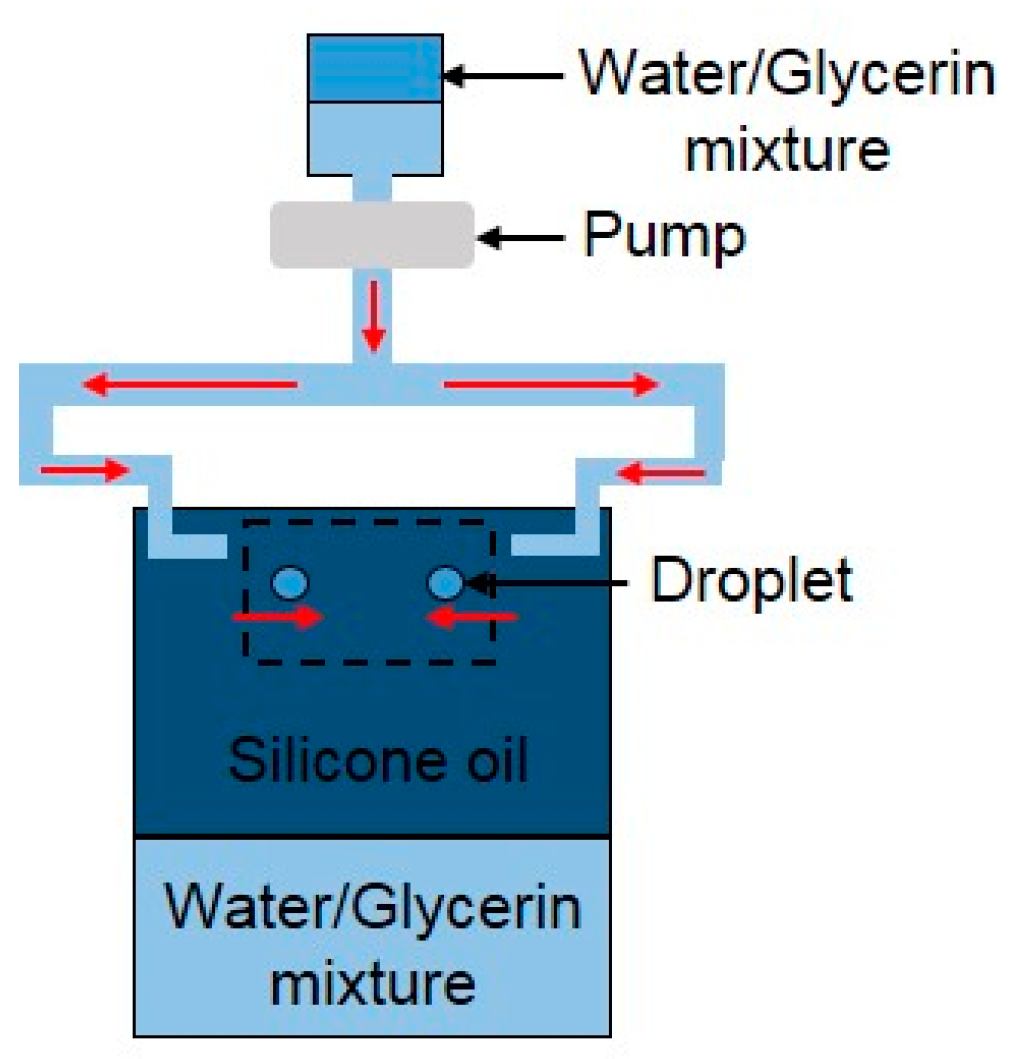
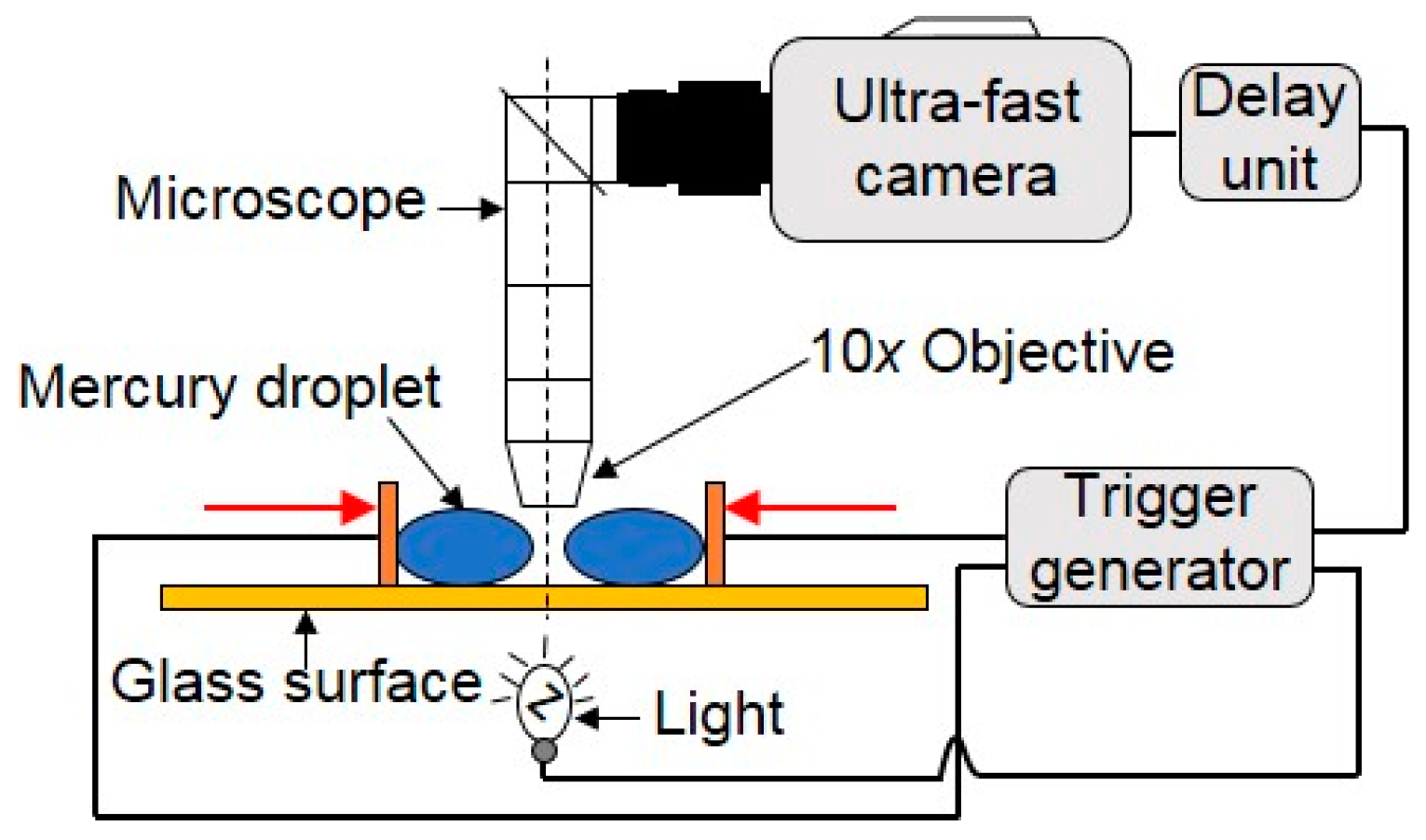
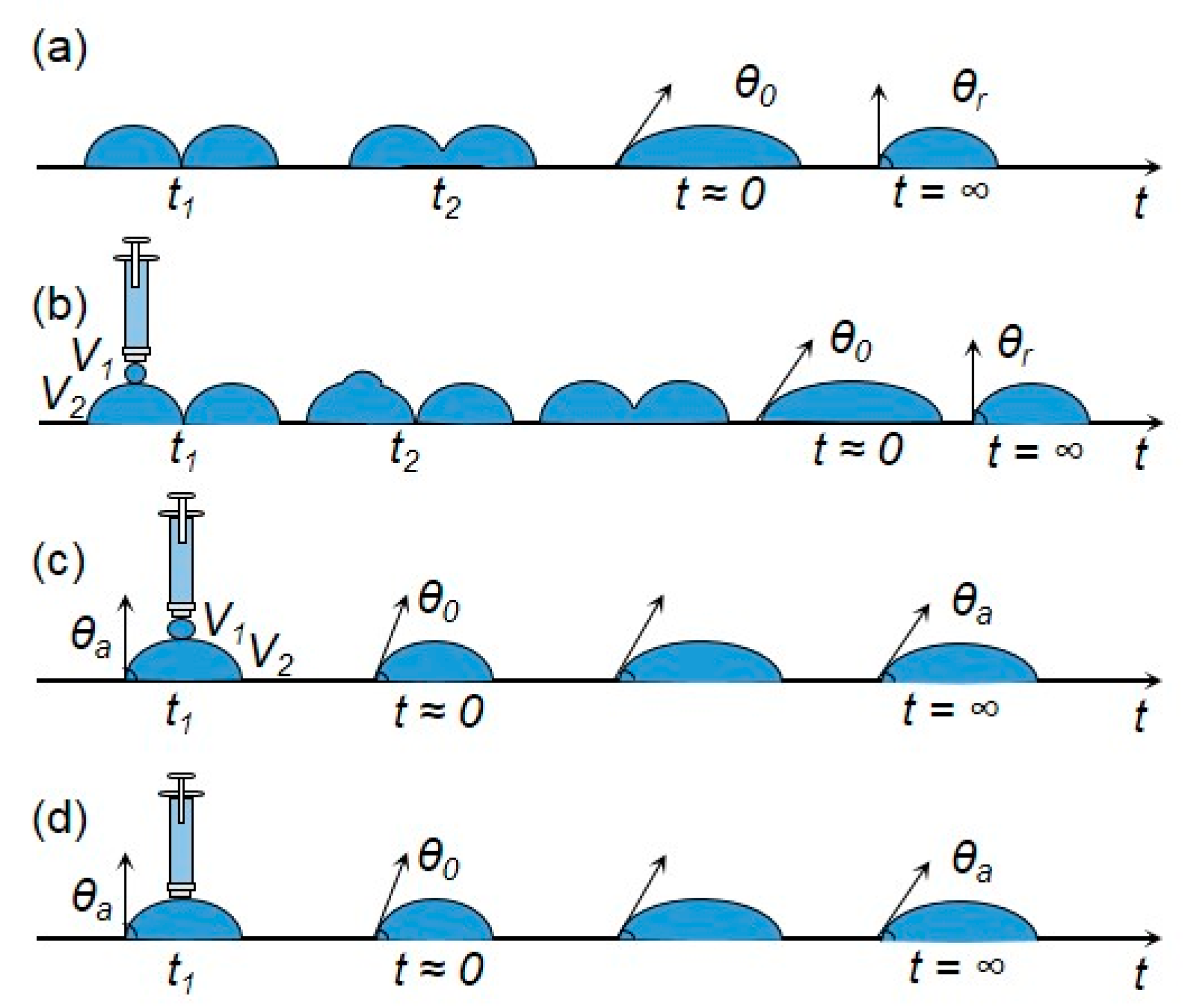
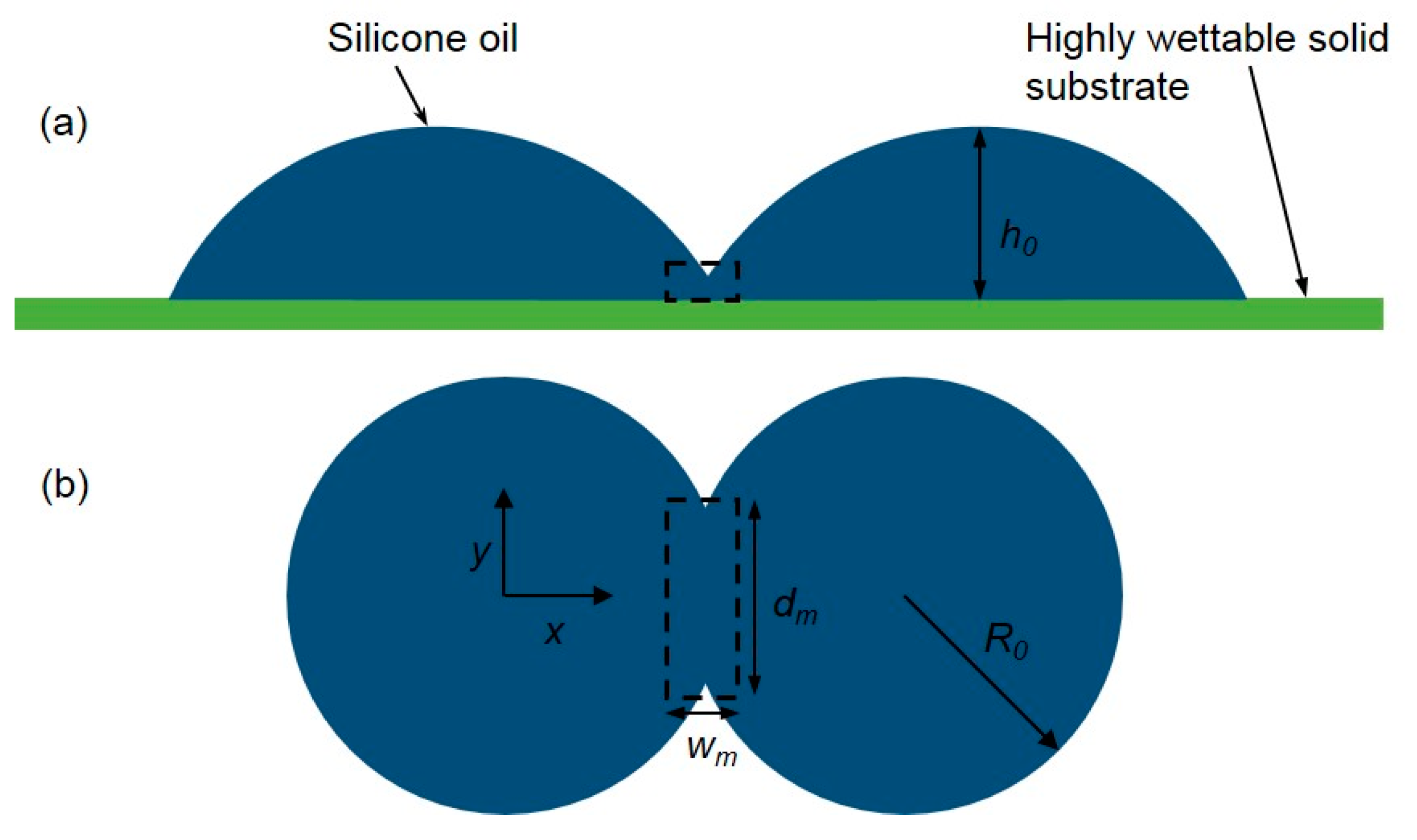
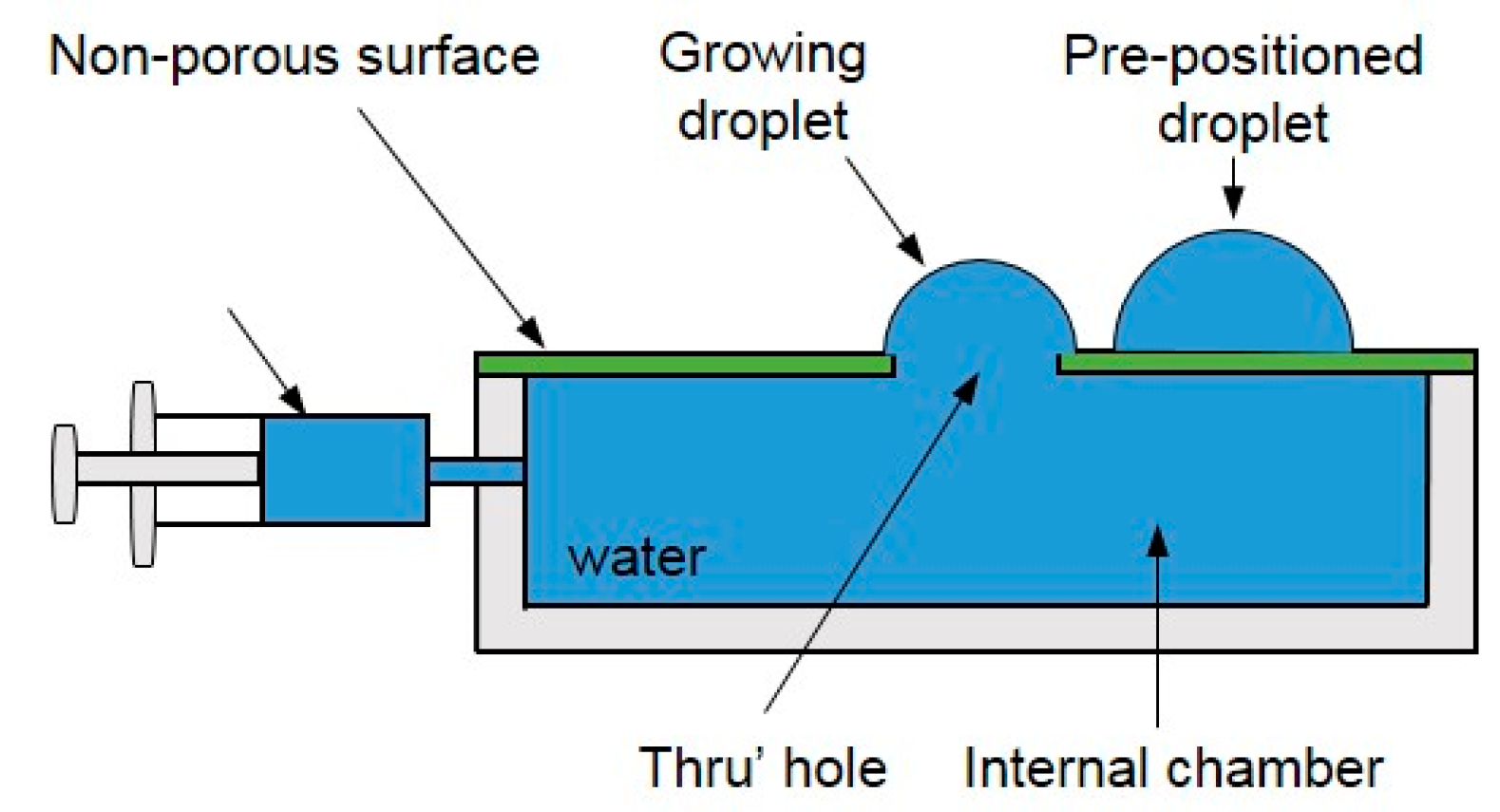
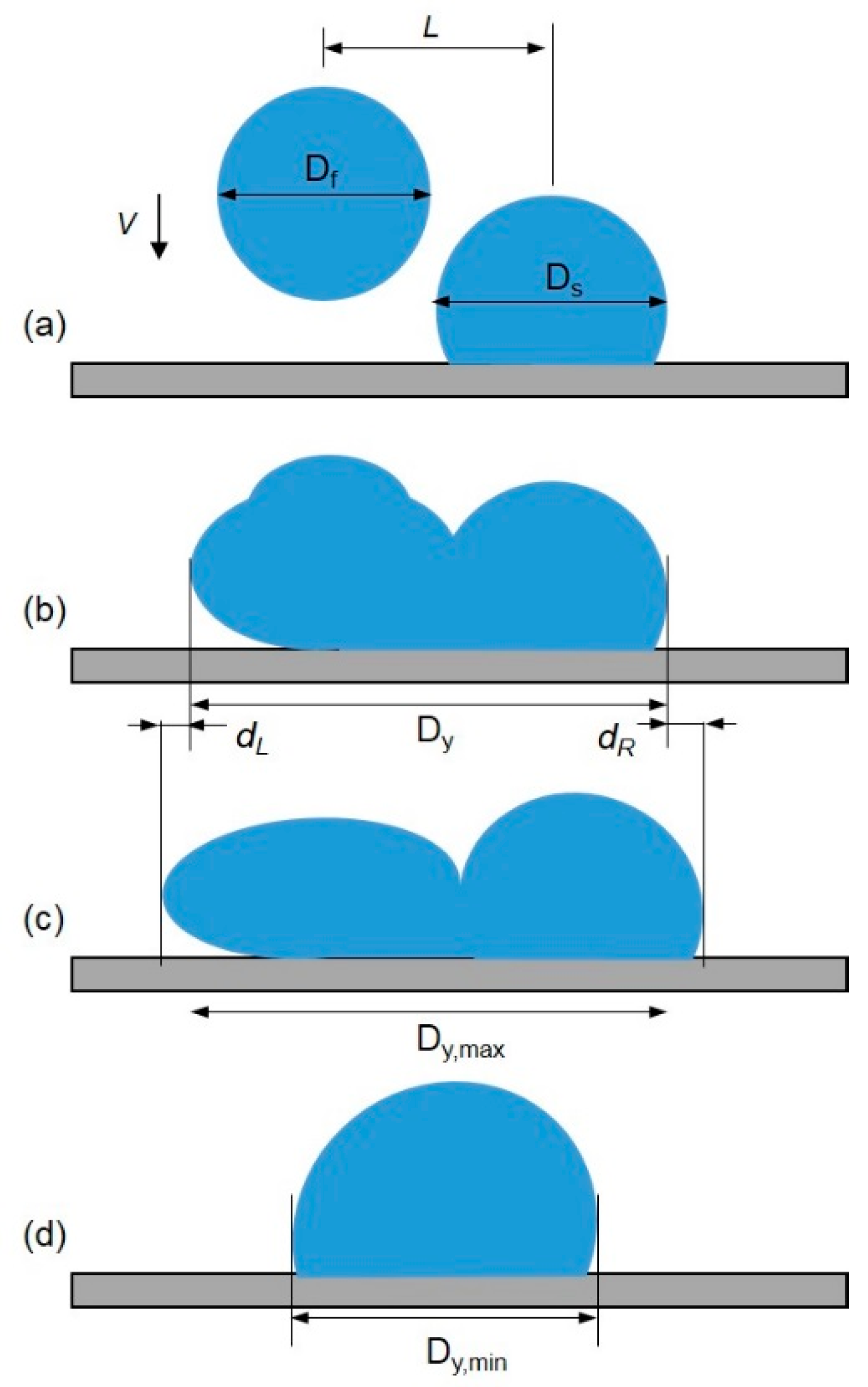
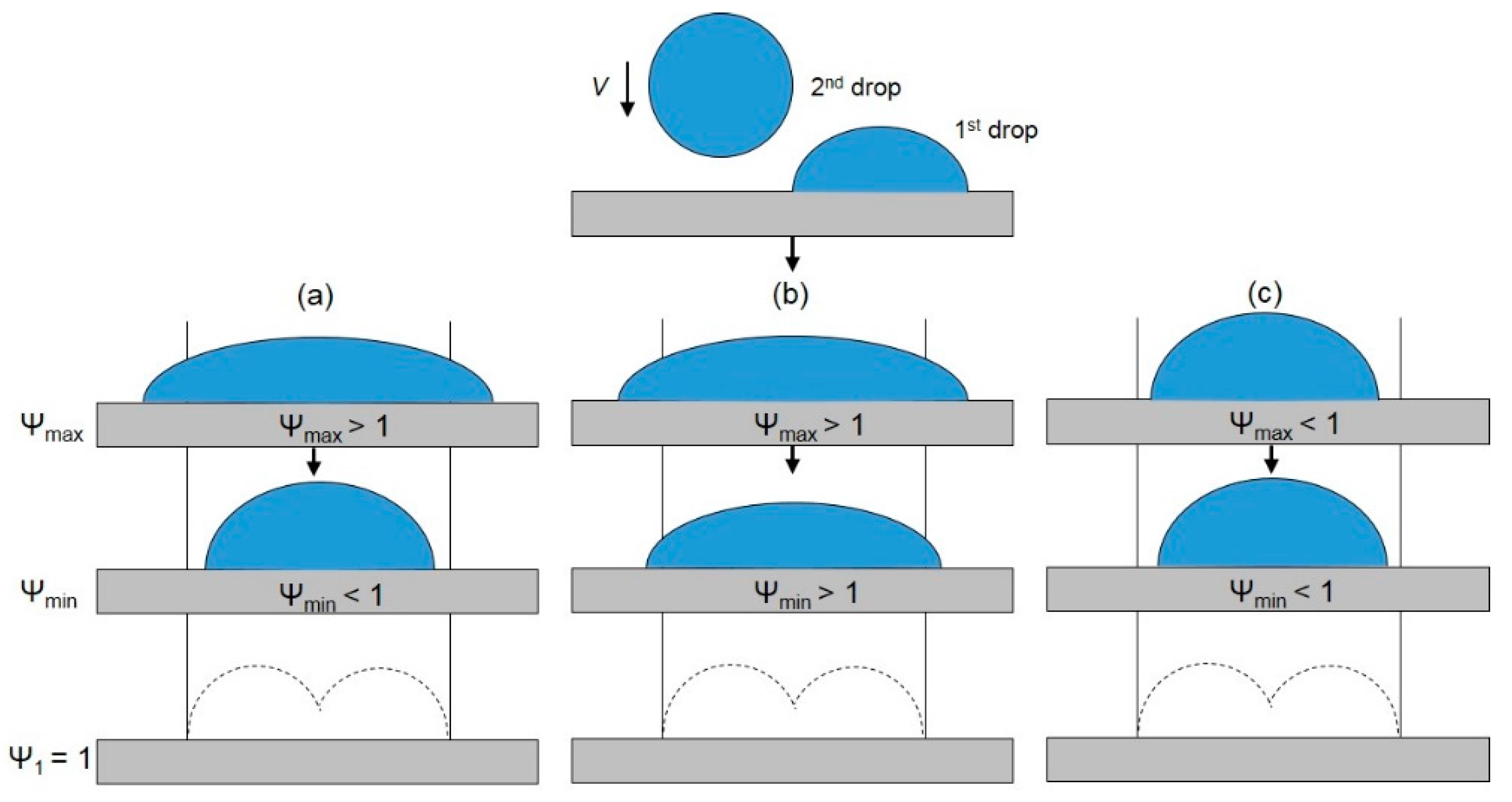





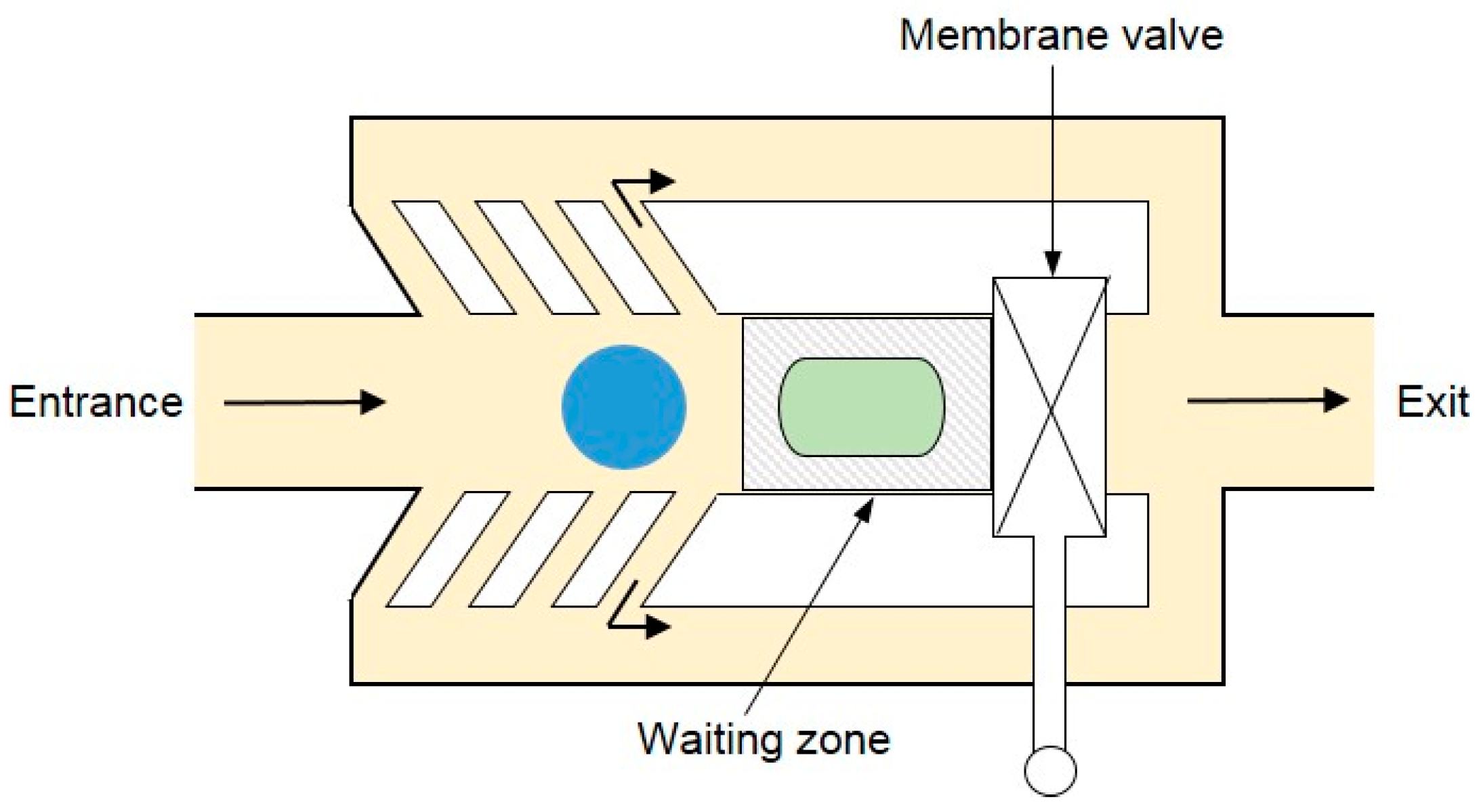
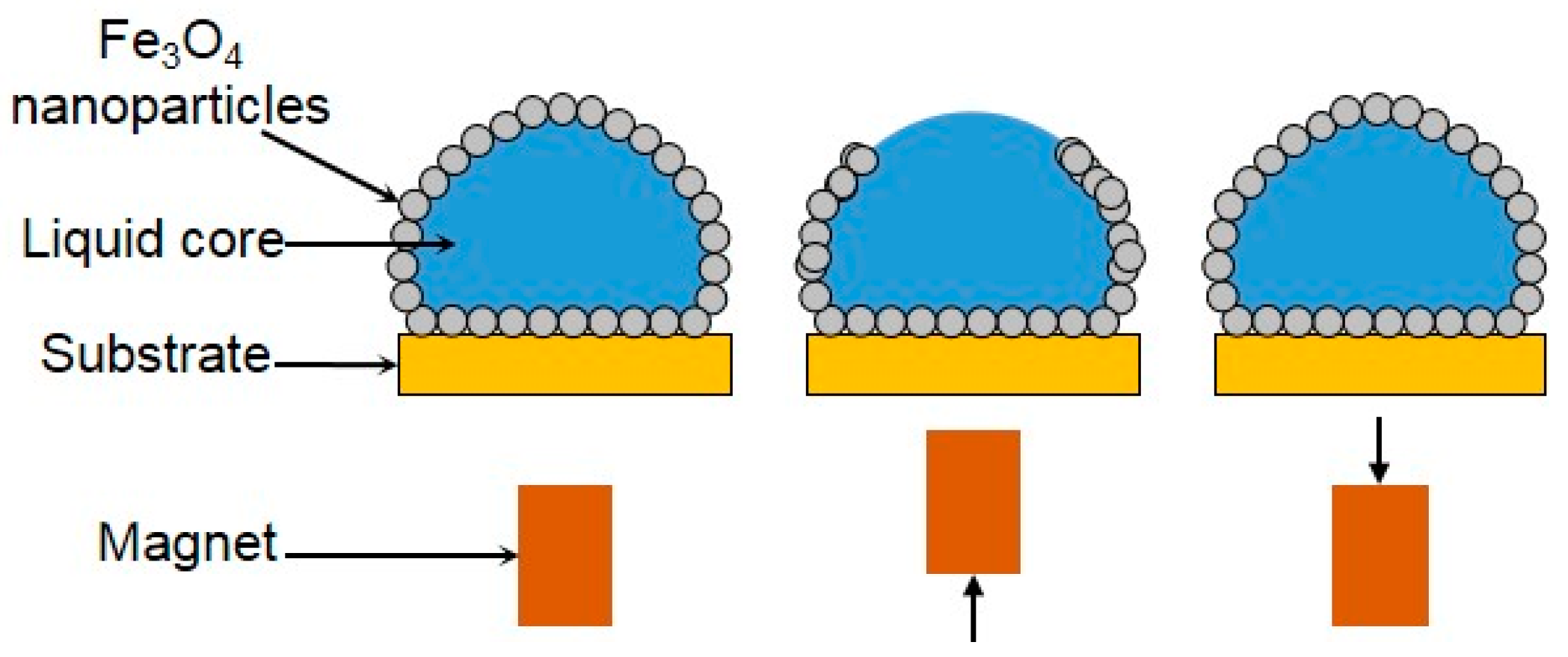

© 2017 by the authors. Licensee MDPI, Basel, Switzerland. This article is an open access article distributed under the terms and conditions of the Creative Commons Attribution (CC BY) license (http://creativecommons.org/licenses/by/4.0/).
Share and Cite
Jin, J.; Ooi, C.H.; Dao, D.V.; Nguyen, N.-T. Coalescence Processes of Droplets and Liquid Marbles. Micromachines 2017, 8, 336. https://doi.org/10.3390/mi8110336
Jin J, Ooi CH, Dao DV, Nguyen N-T. Coalescence Processes of Droplets and Liquid Marbles. Micromachines. 2017; 8(11):336. https://doi.org/10.3390/mi8110336
Chicago/Turabian StyleJin, Jing, Chin Hong Ooi, Dzung Viet Dao, and Nam-Trung Nguyen. 2017. "Coalescence Processes of Droplets and Liquid Marbles" Micromachines 8, no. 11: 336. https://doi.org/10.3390/mi8110336





